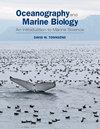配额模型的使用、滥用、误解和见解——40年来的下垂细胞配额模型
1区 生物学
Q1 Agricultural and Biological Sciences
引用次数: 69
摘要
下垂细胞配额模型是被引用最多的浮游植物生长模型,尽管许多人很少注意到最初的描述以及它在描述定义表型可塑性的相互作用方面的局限性。虽然配额模型的概念和大多数生态系统应用的机制基础是基于C的,但许多实验工作是基于细胞的,大多数理论研究忽略了细胞和C营养配额之间的重要差异。配额方法的未来应用将通过采用标准化配额(“配额”)描述而得到加强,该描述采用无量纲常数(KQ)来定义响应曲线,而不是使用原始的固定曲线形式。建立不同浮游植物物种的这些KQ值范围将限制配额模型生态系统变体中自由参数的数量,同时认识到曲线形状对表型变异的重要性。对于N, KQ通常为>.3,而对于P, KQ通常<0.2。此外,需要适当的控制联系,以调节营养物质向限制性和非限制性营养物质配额的运输。总之,这些将能够建立一个更连贯的基于配额的藻类生长描述,更适合浮游生物功能类型模型的发展。本文章由计算机程序翻译,如有差异,请以英文原文为准。
Use, abuse, misconceptions and insights from quota models — the Droop cell quota model 40 years on
The Droop cell quota model is the most cited model of phytoplankton growth, even though many pay scant regard to the original description and to its limitations for the description of the interactions that define phenotypic plasticity. While the mechanistic basis of the concept and most ecosystem applications of quota models are C based, much experimental work is cell based, and most theoretical studies ignore the important differences between cell and C nutrient quotas. The future application of the quota approach would be enhanced by the adoption of a normalised quota ("Quota) description, employing a dimensionless constant (KQ) to define the response curve, rather than using the original fixed-curve form. Establishment of the range of these KQ values for different phytoplankton species would limit the number of free parameters in ecosystem variants of quota models while recognising the importance of curve shape for phenotypic variation. KQ for N is typically >3, while for P it is typically <0.2. In addition, appropriate control linkages are required to regulate nutrient transport to the quotas of limiting and non-limiting nutrients. Together, these would enable the establishment of a more coherent quota-based description of algal growth more fit for the development of plankton functional-type models.
求助全文
通过发布文献求助,成功后即可免费获取论文全文。
去求助
来源期刊
自引率
0.00%
发文量
0
期刊介绍:
With increasing interest in the field and its relevance in global environmental issues, Oceanography and Marine Biology: An Annual Review provides authoritative reviews that summarize results of recent research in basic areas of marine research, exploring topics of special and topical importance while adding to new areas as they arise

 求助内容:
求助内容: 应助结果提醒方式:
应助结果提醒方式:


